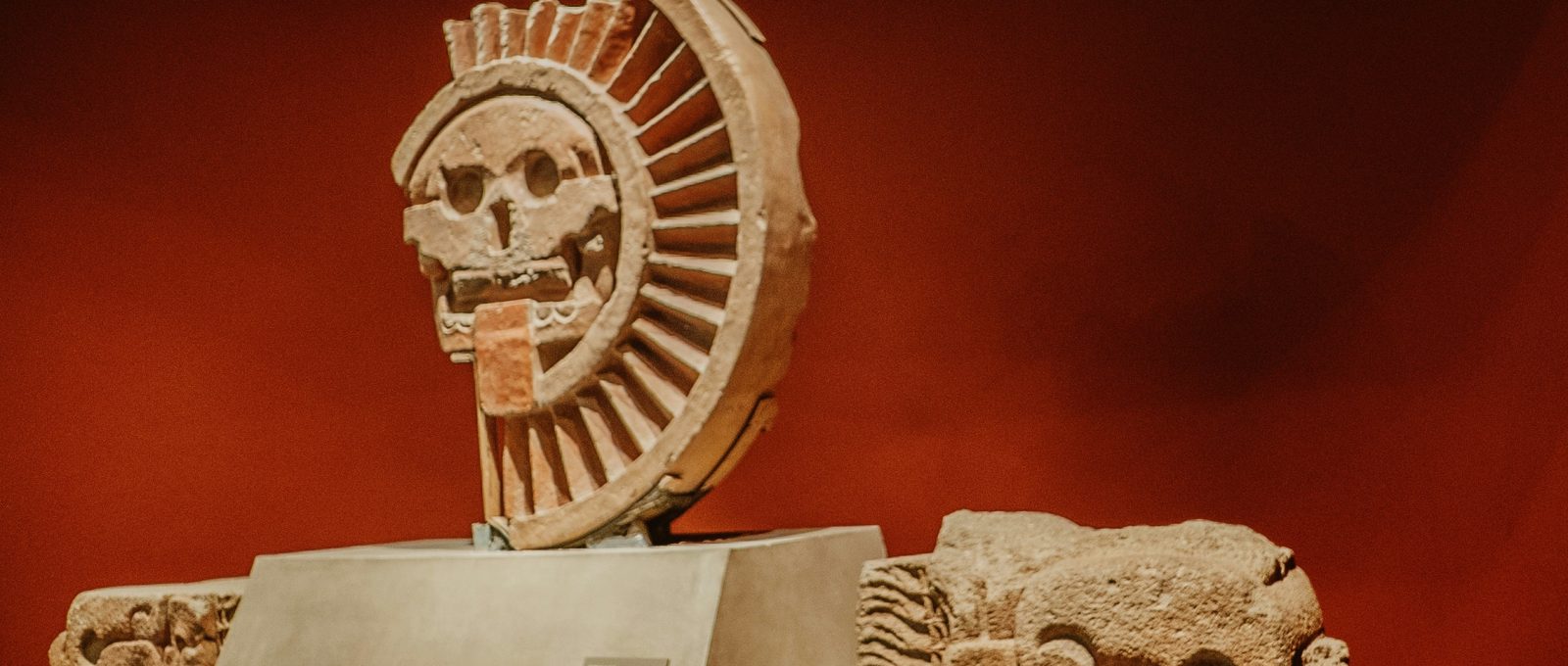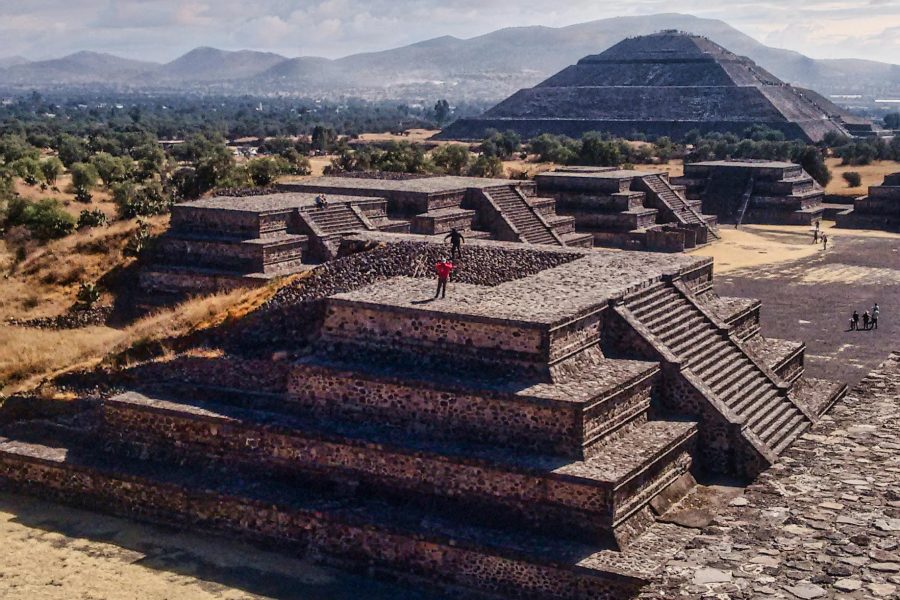Introduction
Welcome to the vibrant heart of Mexico’s culture and history—Mexico City. Boasting an impressive array of museums, this city is a treasure trove for anyone eager to dive into the rich tapestry of Mexican art, history, and science. From ancient artifacts to contemporary art, the museums here offer a unique glimpse into the diverse narratives that have shaped this dynamic country. Whether you’re a history buff, art lover, or simply inquisitive, Mexico City’s museums provide an unforgettable exploration of immense depth and variety. Join us as we delve into the top 20 must-visit museums in this bustling metropolis.
The National Museum of Anthropology

One of the most iconic and crucial cultural institutions in Mexico City, the National Museum of Anthropology offers a deep dive into Mexico’s rich pre-Columbian heritage. Located in the scenic Chapultepec Park, this museum not only showcases significant archaeological finds but also encapsulates the essence of diverse indigenous civilizations that once flourished across what is now modern Mexico.
Exhibits showcasing pre-Columbian civilizations
The museum’s extensive collection includes artifacts from the Maya, Aztecs, and other ancient groups, giving visitors a comprehensive view of these sophisticated societies. From intricately carved stone tools to opulent gold jewelry, each artifact tells a story of artistry, ritual, and daily life.
Famous Aztec Sun Stone
A highlight of the museum is the Aztec Sun Stone, often mistakenly referred to as the “Aztec Calendar.” This massive stone disc, rich with intricate carvings, depicts the cosmology and mythology of the Aztec world and is a must-see for visitors, capturing the imagination and awe of all who view it.
Soumaya Museum
Named after Soumaya Domit, late wife of billionaire Carlos Slim, the Soumaya Museum is famed not just for its vast art collection but as a masterpiece of contemporary architecture. It houses over 66,000 works from 30 centuries of art including sculptures from Pre-Hispanic Mesoamerica, 19th- and 20th-century Mexican art, and an impressive assembly of European old masters.
Impressive collection of European and Mexican art
The museum boasts an extensive array of artworks ranging from old masters like El Greco, Murillo, and Velázquez to modern names such as Dalí and Picasso. Visitors can also explore a significant collection of Mexican artists, giving a panorama of Mexico’s rich artistic narrative across the ages.
Unique architecture designed by Fernando Romero
The building itself is a spectacular sight, designed by the renowned architect Fernando Romero, and is often likened to a shimmering silver cloud or a flowing metallic fabric. Its asymmetrical shape and aluminum surface reflect the Mexico City skyline, creating a dynamic interaction between the exhibit contents and their container.
Free admission
In a generous move, the Soumaya Museum offers free admission to all, making it accessible to a broad audience, including international tourists and local residents. This initiative not only democratizes art access but encourages cultural enrichment and education among the community.
Museo Frida Kahlo (Frida Kahlo Museum)
Home of renowned Mexican artist Frida Kahlo
Nestled in the quaint neighborhood of Coyoacán, the Museo Frida Kahlo, also known as the Blue House for its vibrant cobalt walls, stands as a profound memorial to one of Mexico’s most iconic artists. This was the birthplace of Frida Kahlo, and the house where she spent many years of her life. Visitors to the museum can explore the rooms she once lived in, maintained much as they were during her time, offering an intimate glimpse into her daily life and the spaces that inspired her creativity.
Personal artifacts and artwork
The museum is not only architecturally striking but also deeply personal, featuring an extensive collection of Frida Kahlo’s artwork, personal belongings, and memorabilia. Highlights include:
– Original paintings and sketches by Frida, which provide insights into her complex inner world and her dealings with physical pain and turbulent emotions.
– A display of her iconic Tehuana clothing, which reflects her profound sense of identity and her political beliefs.
– Personal letters and diaries that offer visitors a deeper understanding of her thoughts and relationships.
These artifacts collectively paint a rich portrait of her life, making the Frida Kahlo Museum a must-visit for anyone interested in understanding the depth of her artistic and personal legacy.
Templo Mayor Museum
Located right in the heart of downtown Mexico City, the Templo Mayor Museum offers a fascinating look into the Aztec empire, right where it once stood. The museum was built after the discovery of the main temple of the Mexica capital Tenochtitlan, and today, it houses thousands of artifacts excavated from the site. This museum provides an exceptional narrative of Aztec life and culture through its detailed exhibitions and meticulously preserved relics.
Museo Nacional de Arte (National Art Museum)
Mexican and European art collections
The Museo Nacional de Arte houses a stunning collection that spans Mexican art from the 16th to the mid-20th centuries, alongside an impressive array of European artworks. Visitors can explore everything from colonial religious art and portraits to modern pieces by renowned Mexican artists. The museum’s layout facilitates a chronological journey through the evolution of Mexican artistry, making it both an educational and visually captivating experience.
Formerly a 19th-century palace
Originally a palatial building from the 19th century, the museum itself is a piece of art. Its grand architecture, characterized by ornate details and majestic staircases, adds a unique charm and historical depth to the visitor’s experience. This backdrop not only enhances the artwork displayed but also highlights the cultural richness of Mexico’s past.
Temporary exhibitions
To keep the museum experience fresh and engaging, the Museo Nacional de Arte regularly hosts temporary exhibitions. These exhibitions feature works from both international artists and lesser-known Mexican talents, providing a platform for a wider variety of voices in the art world. It is always exciting to see what new themes and collections will be featured, making each visit unique.
Palace of Fine Arts
Iconic cultural center
Recognized as an architectural and cultural beacon in Mexico City, the Palace of Fine Arts is not only a museum but also a vibrant cultural center. It hosts a range of activities, including opera performances, dance productions, and music concerts, making it a key point of interest for anyone wanting to immerse themselves in Mexican culture.
Murals by Diego Rivera
Among the many artistic treasures of the Palace of Fine Arts, the murals painted by Diego Rivera stand out. These murals are celebrated for their rich detail and powerful social and political commentary. Rivera’s ability to encapsulate the essence of Mexican societal struggles and achievements in his art makes every mural tell a compelling story, deepening the cultural experience for viewers.
Museum of Modern Art
The Museum of Modern Art in Mexico City serves as a celebrated sanctuary for art enthusiasts, embodying a comprehensive collection of 20th-century Mexican art. Nestled in the heart of Chapultepec Park, the museum features works by revered artists such as Diego Rivera, Rufino Tamayo, and Frida Kahlo. Its exhibitions regularly rotate, offering fresh perspectives on modern art movements and their impact. Visitors can also enjoy the museum’s sleek architecture and the scenic park setting, which complement the art’s visual journey.
Museo Dolores Olmedo
Located in the picturesque area of Xochimilco, Museo Dolores Olmedo is housed in a beautiful stone structure that was once a private estate. This museum is particularly famous for its extensive collection of works by Diego Rivera and Frida Kahlo, making it a critical stop for anyone interested in these iconic artists.
Houses a significant collection of Diego Rivera and Frida Kahlo’s works
Museo Dolores Olmedo proudly holds one of the largest collections of Diego Rivera’s paintings in the world. Additionally, the museum showcases numerous works by Frida Kahlo, offering a profound insight into the personal and artistic lives of Mexico’s most famous artistic couple. Their vibrant canvases, rich in color and emotion, draw numerous art lovers and scholars to the museum each year.
Beautiful gardens
The grounds of Museo Dolores Olmedo are as enchanting as the collections housed inside. The museum is surrounded by lush, meticulously maintained gardens that feature native flora, wandering peacocks, and tranquil water features. These gardens provide a serene escape from the bustling city and a perfect backdrop for contemplating the impactful art inside.
Museo Tamayo
Contemporary art exhibitions
Museo Tamayo stands out in Mexico City as a premier destination for contemporary art lovers. Exhibiting works from both Mexican and international artists, the museum not only showcases modern artworks but also offers dynamic programs that include temporary exhibitions, workshops, and cultural events. The space itself is a canvas, featuring installations that challenge and provoke thought amongst its visitors.
Designed by renowned Mexican architect Teodoro González de León
The architecture of Museo Tamayo is as captivating as the art it houses. Designed by the famous Mexican architect Teodoro González de León, the building is a modernist masterpiece. Its sleek, minimalist lines and integration with the surrounding wooded landscape of Chapultepec Park make it a visual highlight in its own right, enhancing the overall experience of the art within.
Anahuacalli Museum
Diego Rivera’s Stone House
Nestled amidst volcanic rock in the south of Mexico City, the Anahuacalli Museum, literally meaning “house in the water,” serves as a monumental tribute to Diego Rivera. Envisioned and partially designed by Rivera himself, the museum is constructed from black volcanic stone, giving it a strikingly unique and robust appearance. It stands as a personal project of Rivera, aiming to house his vast collection of pre-Hispanic artifacts.
Pre-Hispanic art collection
The Anahuacalli Museum is home to one of the most extensive collections of pre-Hispanic art in Mexico. With over 2,000 pieces on display, the collection ranges from sculptures and pottery to jewelry and tools from various indigenous cultures of Mexico. Each artifact is thoughtfully displayed to reflect the deep historical and cultural richness of the pre-Columbian era, making it an invaluable resource for anyone interested in Mexico’s ancient civilizations.
Franz Mayer Museum
The Franz Mayer Museum offers a fascinating glimpse into the world of decorative arts, featuring an extensive collection that spans the 16th to 19th centuries. This museum is a treasure trove of ornate furniture, fine ceramics, silverwork, and textiles, each piece telling its own story of craftsmanship and elegance.
Decorative arts collection
Highlighting Mexican and European heritage, the museum’s decorative arts collection is one of the finest, carefully preserved and displayed. Porcelain from Asia, intricately crafted silver pieces from Mexico, and vibrant textiles showcase the interplay of global influences across centuries. Audio guides and placards provide rich contextual backstories, enhancing the visitor experience.
Baroque-style building
The museum itself is housed in a stunning Baroque-style building that is a piece of art on its own. Originally a hospital, the building was transformed into the museum in the 1980s, capturing the architectural grandeur of its era with every arch and column. Its meticulously landscaped courtyards and gardens offer a peaceful retreat from the bustling city outside.
Museo de Arte Popular (Folk Art Museum)
Dedicated to the preservation and promotion of Mexican folk art, the Museo de Arte Popular showcases an exciting array of handmade crafts and artworks. From intricately painted ceramics to vibrant alebrijes (colorful Mexican folk sculptures), the museum celebrates Mexico’s rich cultural heritage through its exceptional collections.
Mexican handicrafts and folk art
Visitors can explore a vast array of traditional crafts that include textiles, pottery, glasswork, and more. Each region of Mexico contributes its unique style and techniques, making the displays diverse and colorful. Workshops and live craft demonstrations provide interactive opportunities to learn about the processes behind the creation of these beautiful works.
Thematic exhibitions
Throughout the year, the Museo de Arte Popular hosts various thematic exhibitions that focus on specific aspects of Mexican folk art. These exhibitions provide deeper insights into the cultural and socio-economic contexts of the crafts on display. Themes may range from religious festivities to day-to-day life, offering a comprehensive understanding of the art’s significance and usage.
Museo Jumex
Contemporary art collection
Museo Jumex is a beacon of contemporary art, boasting an impressive collection that spans works from both international and Mexican artists. Located in the upscale Polanco district, its eye-catching modern architecture sets the stage for its exhibitions. The museum’s vast array of artworks includes pieces from its own foundation and various important loans, focusing significantly on emerging artists and cutting-edge works. Frequent new exhibitions mean that no two visits are quite the same, keeping art lovers coming back.
Support for Mexican artists
Museo Jumex is deeply committed to nurturing Mexican talent. It not only showcases local contemporary artists but also supports them through educational programs and research grants. This commitment helps propel Mexican artists onto the international stage, contributing to the global art dialogue and ensuring that these artists receive the recognition they deserve.
Diego Rivera Mural Museum
Former home and studio of Diego Rivera
The Diego Rivera Mural Museum is dedicated to one of Mexico’s most famous artists. This unique museum was once the residence and studio of Diego Rivera himself, providing visitors with an intimate glimpse into his life and work. Located across from the Alameda Central park, the building is a notable site, not only for its historical value but also as a repository of Rivera’s passion and creativity, preserved in the very space where he once worked.
Mural reproductions
While the original murals by Diego Rivera are scattered across various locations in Mexico and abroad, the Diego Rivera Mural Museum offers a unique opportunity to see excellent reproductions of his most famous works. These reproductions are executed with high fidelity and provide insight into Rivera’s artistic and political vision. Visitors can enjoy detailed explanations of each piece, understanding the context and significance behind Rivera’s iconic murals.
Museo Casa Estudio Diego Rivera y Frida Kahlo (Diego Rivera and Frida Kahlo House-Studio Museum)
Nestled in the scenic San Ángel area of Mexico City, the Museo Casa Estudio Diego Rivera y Frida Kahlo allows visitors to step into the private lives of two of Mexico’s most iconic artists. This museum was originally designed by Juan O’Gorman, a close friend and a noted architect, specifically to serve as a creative workspace for both artists.
Residence of artists Diego Rivera and Frida Kahlo
The compound features separate houses connected by a walkway, symbolizing their dynamic personal and professional relationship. Each space uniquely reflects Rivera’s and Kahlo’s individual tastes and styles, offering a poignant glimpse into their domestic lives amidst burgeoning artistic careers in the early 20th century.
Displays their personal belongings and artworks
Stepping inside, you’ll find an eclectic mix of their personal belongings, including their art tools, books, and clothing, alongside some of their lesser-known artworks. The walls still echo the vibrancy and tumultuous passion that defined both their relationship and their distinctive art forms.
Museo Casa de León Trotsky
After fleeing Stalinist Russia, Leon Trotsky found asylum in Mexico in 1937. The Museo Casa de León Trotsky, located in Coyoacán, preserves the place where this influential political theorist lived—and ultimately was assassinated in 1940.
Home of Russian revolutionary Leon Trotsky
This modest house has been preserved almost exactly as it was during Trotsky’s days, complete with bullet holes from an unsuccessful assassination attempt in 1939. The heavily fortified home, surrounded by high walls and equipped with guard towers, speaks volumes about the ever-present threat Trotsky faced during his final years.
Artifacts related to his life in Mexico
The museum showcases a range of personal items including Trotsky’s reading glasses, books, and the desk he used up until his death. A well-curated exhibit provides insights into his political life, featuring manuscripts, photographs, and even the ice axe that was used to assassinate him. Through these artifacts, visitors gain a deep understanding of Trotsky’s significant yet turbulent years in Mexico.
Museo Nacional de San Carlos
European art collection
The Museo Nacional de San Carlos houses an impressive collection of European art, spanning the Renaissance to the early 20th century. Visitors can admire works from Italian, Spanish, French, and English artists, with notable pieces by the likes of Tiepolo, Rubens, and Goya. The carefully curated selection emphasizes the historical and artistic connections between Europe and Mexico, making it a fascinating visit for art lovers.
Formerly a Royal Palace
Originally built as a palatial residence, the building that now hosts the Museo Nacional de San Carlos once served as a royal palace. Its majestic architecture and refined décor provide the perfect backdrop for the museum’s rich collection of art. Strolling through its elegant halls, visitors can truly feel the blend of historical grandeur with cultural heritage, underscoring the museum’s role as a guardian of both European and Mexican art traditions.
Museo de Arte Carrillo Gil
Contemporary art exhibitions
The Museo de Arte Carrillo Gil is known for its cutting-edge contemporary art exhibitions that feature up-and-coming artists alongside established figures. The museum regularly updates its exhibits, ensuring fresh and engaging presentations that reflect current trends and thoughts in the art world. It’s a vibrant space that encourages dialogue and exploration, making it a must-visit for those interested in the latest in creative expression.
Focus on Mexican and Latin American art
Apart from its global contemporary focus, the Museo de Arte Carrillo Gil places a special emphasis on Mexican and Latin American art. This dedication is seen in its permanent collection and special exhibitions, which showcase the works of artists from across the region. The museum not only highlights their artistic contributions but also explores their social and political contexts, offering a deep dive into the rich tapestry of Latin American culture.
Museo Universitario Arte Contemporáneo (UNAM)

Modern and Contemporary Art Collection
The Museo Universitario Arte Contemporáneo, known as MUAC, located within the sprawling Universidad Nacional Autónoma de México (UNAM), is a bastion of modern and contemporary art. The museum boasts a permanent collection that encapsulates the vibrant energy of Mexico’s art scene, featuring works from notable Mexican and international artists. This collection spans various mediums including painting, sculpture, installations, and video art, offering a broad spectrum of creative expression from the 1950s to the present.
Exhibitions Featuring Emerging Artists
MUAC is particularly lauded for its commitment to showcasing emerging talent. Regularly rotating exhibitions provide a platform for young, lesser-known artists to display their work alongside established names. These exhibits not only highlight the latest trends and innovations in contemporary art but also encourage dialogue and reflection among viewers. Each visit promises something new, reflecting the dynamic and ever-evolving nature of contemporary art.
Conclusion: Recap of the Top 20 Best Museums in Mexico City
As we’ve explored, Mexico City’s museums are not only numerous but varied, each offering a unique window into the country’s rich tapestry of history, vibrant art scenes, and contemporary culture. From the archaeological wonders at the National Museum of Anthropology to the stirring personal displays at Frida Kahlo’s Blue House, these venues are essential visits for both art aficionados and history buffs alike. Whether you’re drawn to the traditional, like the Museo de Arte Popular, or the contemporary, such as the MUAC, there’s something in the city to satisfy every cultural curiosity. So when planning your trip, make sure to include these top museums on your itinerary to fully experience the depth and diversity of Mexican heritage.







1 Comment